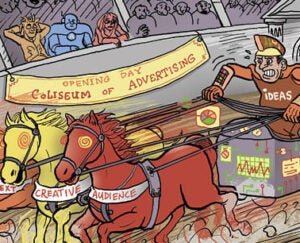The 2024-25 NBA season has been one for the ages.
The Eastern Conference saw the rise of the Cleveland Cavaliers to the No. 1 seed and the Detroit Pistons winning 30 games more than last season. Out West, we saw a bombshell trade (Luka to the Lakers … really?) and an exciting playoff race that came down to the final weekend. And the playoffs have already been epic, with the continuation of the Knicks/Pacers rivalry leading to a shocking upset in Game 1 of the Eastern Conference Finals.
Even with the amazing storylines, this season brought a steep decline in local TV viewership across several markets, with viewership for multiple teams declining by 50% or more. But the numbers don’t tell the whole story.
While it’s tempting to frame this as waning fan interest, the truth is more nuanced. These drops are symptoms of a media ecosystem in transition. As traditional regional sports networks (RSNs) lose distribution power and audiences migrate online, linear streaming is beginning to take hold. The shift is real and messy, but it’s also laying the groundwork for a more flexible, data-rich future for both media companies and advertisers.
Recently, NBA commissioner Adam Silver put it best: “[Local game broadcasts] are caught in legacy media, which is rapidly declining. And our young fans, in particular, we used to talk about cord-cutters; they’re really cord-nevers. It’s not part of their lives to buy cable … And so the local situation by definition will then get even worse.”
Linear streaming, explained
Linear streaming delivers scheduled, channel-style programming via the internet instead of through cable or satellite. The key characteristic is that the programming and advertising are scheduled and shown at specific times, just like traditional linear TV, but now delivered through digital infrastructure.
While it mimics the traditional TV experience, linear streaming also adds layers of interactivity, device flexibility and ad-targeting potential. Linear streaming makes it possible for sports leagues to maintain control over distribution and collect more granular viewer data, which RSNs do not offer.
Take, for instance, Victory+, a free ad-supported streaming platform, launched in partnership with the Dallas Stars NHL hockey team. This gives the Stars a direct relationship with fans while having greater control over their media rights and data collection.
Fragmentation and streaming viewership
Yet live sports’ transition to streaming has come with growing pains. The fragmented nature of current sports rights deals means fans often struggle to find where and how to watch their local teams.
The Chicago Bulls, for instance, suffered a 62% drop in local ratings this season, largely because a distribution dispute made games inaccessible to many Comcast subscribers in the city. Other teams saw losses as they shifted away from RSNs to newer platforms, likely because they did not educate fans on how to access broadcasts.
Some franchises are navigating this shift more successfully. The Portland Trail Blazers exited their RSN deal and launched a direct-to-consumer streaming service while also expanding over-the-air availability. Viewership doubled, thanks in part to a campaign that made it easier for fans to find and understand the new setup.
Similarly, the Houston Rockets and Cleveland Cavaliers saw 45% and 60% increases in local viewership, respectively, driven by accessible broadcasts and improved team performance.
Still, the transition has been inconsistent for fans, which has hurt viewership. However, local teams and broadcasters who embrace streamlined, fan-friendly solutions will likely see viewership rebound.
Why advertisers should be optimistic
For advertisers, linear streaming introduces new possibilities that were not feasible under the RSN model. Traditional RSNs delivered scale, but they were often limited by a lack of viewer data, rigid ad formats and an inability to personalize campaigns.
Streaming changes that equation entirely. Instead of buying ad slots against a general demographic, brands can now target ads based on location, device type, behavior and even viewing history. Services like Hulu, YouTube TV and Peacock already offer dynamic ad insertion, which swaps out ad creatives in real time based on who’s watching. This makes it possible to deliver different messages to different households during the same game – something linear television can’t do.
Campaign performance on streaming platforms can be measured with the same rigor as digital advertising. Advertisers can see real-time metrics like completion rates, frequency, reach and conversions, enabling them to optimize creative and placement mid-campaign.
Regional sports models are still evolving, but they’ll soon deliver the benefits that streaming provides. The Portland Trail Blazers manage their own ad inventory through their BlazerVision streaming service. An in-house team sells ad spots across linear that also appear on the streaming service. The team is now developing custom ad formats.
As more NBA teams (or the league as a whole) explore direct-to-consumer platforms or partner with streaming services, these capabilities will gradually become available at the local level. This could open the door to more flexible buying options, hyperlocal targeting and a wider range of advertisers, especially those priced out of traditional RSN buys. The growing accessibility of these tools means the shift to linear streaming may result in a more efficient, personalized and performance-driven local advertising market.
Making the transition work
The decline in local ratings is not a sign that fans are disappearing; it’s a sign that the way they engage is changing. As this transformation accelerates, broadcasters need platforms that can smooth the transition.
The challenge ahead is scale and standardization. But the destination is one where local sports can finally offer the kinds of advertising value – measurable, targetable, dynamic – that national digital platforms provide.
“On TV & Video” is a column exploring opportunities and challenges in advanced TV and video.
Follow Operative and AdExchanger on LinkedIn.















